The night before WCRG, and all through the office, not a creature was stirring...except two dozen mini-sumo robots - AAAHH! Thanks to Alberta Printed Circuits, we were able to sponsor a mini-sumo workshop to build 24 robots to compete in the next day's Western Canadian Robot Games.
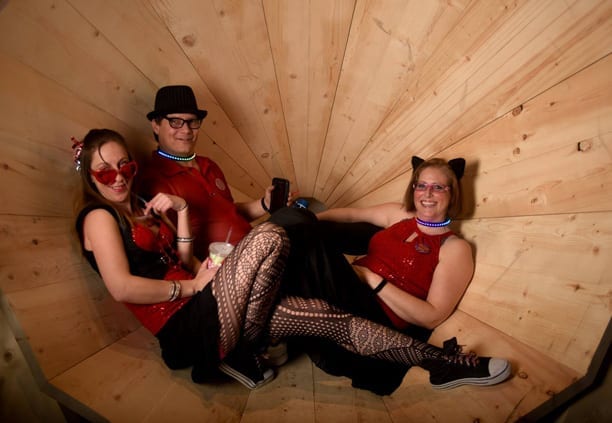
Project: APA102-2020 MicroNova Custom LE...
I created this choker as a project to demonstrate the new MicroNova APA102-2020 LED strips. 
Photo by Yeti, edited by Batgirl
These addressable LEDs are extremely small, less than 1/4 the size of a standard 5050 LED.
This project was built using engineering sample standard MicroNova 99 LED / meter strips . The MicroNova strips we are selling have 198/meter - twice the density!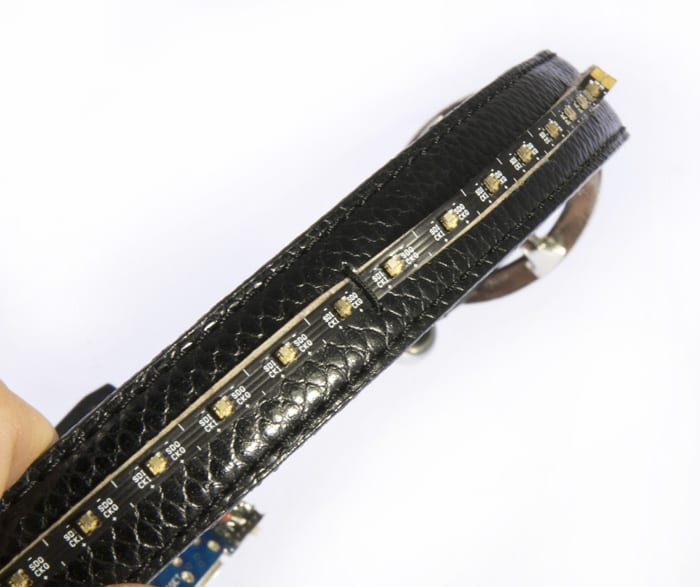
Reason for a Choker necklace:
Hats have been done, shoes have been done, pendants have been done.
This is something new for a Valentine’s dance costume, so I decided to go with a choker design. I also wanted something that was interactive, something that would add another layer of WOW to just lighting.
Build:
I used a Wemos D1 Mini development board along with a boost-converting battery shield for the Wemos D1.

The battery shield was a particularly good choice here because the MicroNova LEDs should be supplied a solid 5VDC. This board boosts the battery voltage to 5V, and then the Wemos D1 Mini bucks it down to 3V3 for it's own operation.
A mini SPDT Slide switch toggles the power from the battery shield to the D1. This allows charging the battery using the battery shield USB connector while not powering the D1.
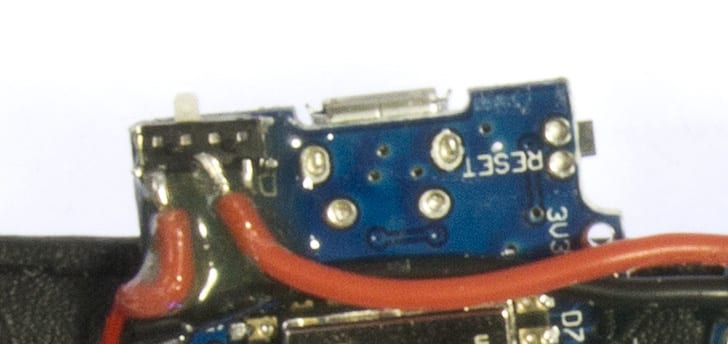
Epoxy locks the switch and wires in place.
The battery used is a conveniently handy older 450mAh Lithium Polymer. Depending on the lighting mode, this battery can power the necklace for a couple of hours.
I used elastic thread to attach the LED strip and components to the necklace. A heavy duty needle was all that was needed to punch through the (imitation) leather belt. Because the thread was elastic and tied under tension, it held the MicroNova strip well in place.
Operation:
 When the choker powers up, it creates a WiFi Access Point called "HeartBurnChoker1".
When the choker powers up, it creates a WiFi Access Point called "HeartBurnChoker1".
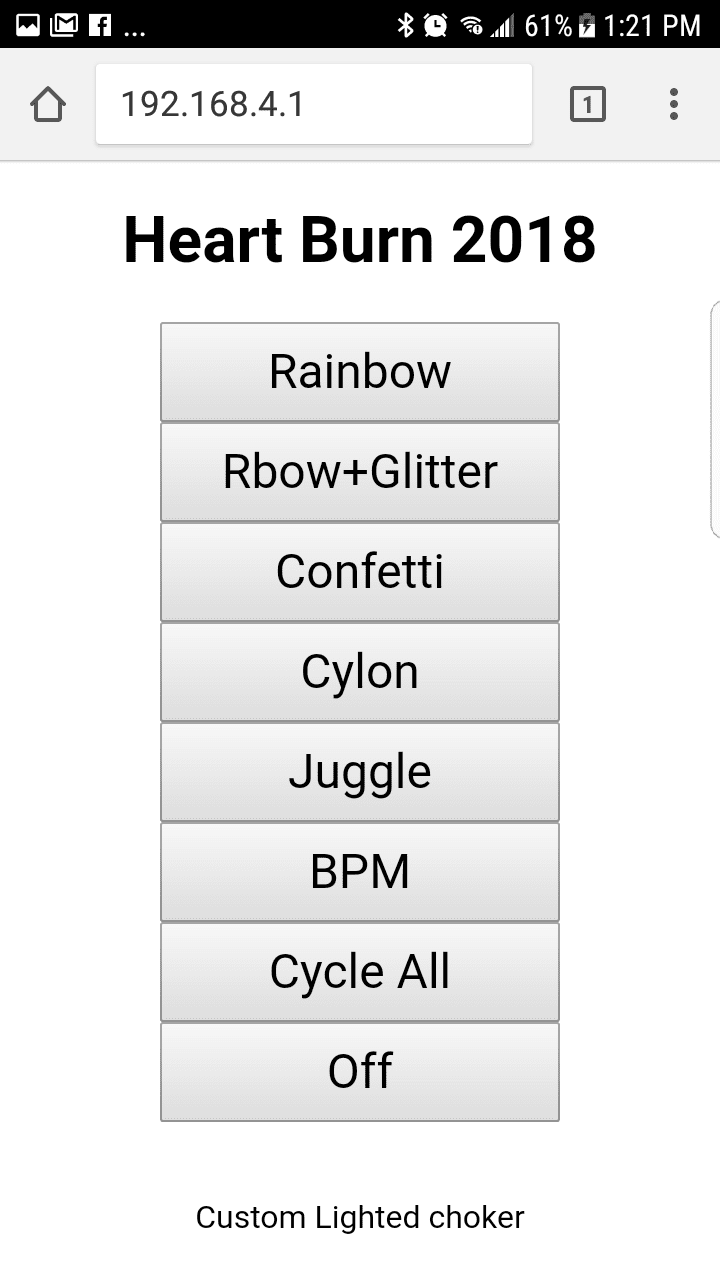 Once I connected to this WiFi, I opened a browser and went to 192.168.4.1. The control interface is simple, but effective. The D1 Mini has more than ample power and speed to effectively drive these LEDs. The MicroNova features separate clock & data lines, so even relatively slow I/O (like Raspberry Pi) can still make it work.
Once I connected to this WiFi, I opened a browser and went to 192.168.4.1. The control interface is simple, but effective. The D1 Mini has more than ample power and speed to effectively drive these LEDs. The MicroNova features separate clock & data lines, so even relatively slow I/O (like Raspberry Pi) can still make it work.
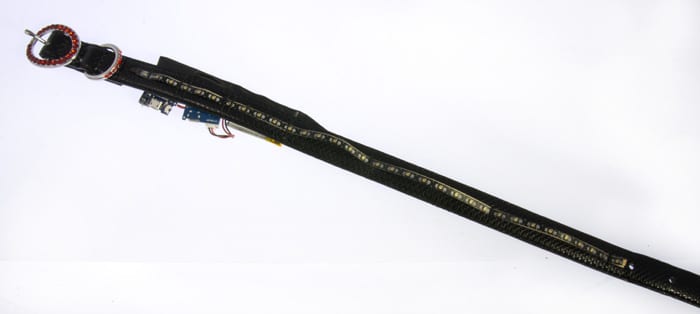
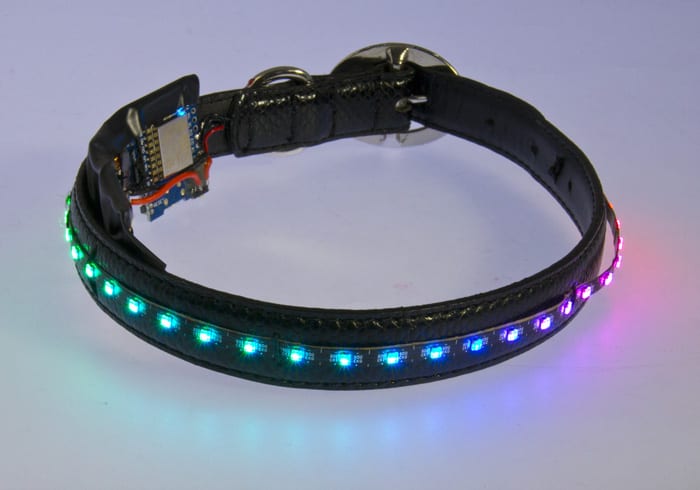
MORE POSTS
Yet another selection of hand-picked links from all over the interwebs: Visualizing Ballet .. using Lilypad Arduino. Looks beautiful, produces drawing-like results and helps dancers to trace their movements for necessary feedback. (Via Arduino blog) Tiny CNC-bot Beautiful little Piccolo, in it's second incarnation (first one was all clear acrylic). 3D printed Katana Case Is […]
Word is Mark W. Tilden gave CBC Radio a nice interview that'll be aired right after the 10am news on your local CBC station. Not Canadian? Use the internet to your advantage. Use this link to find the station closest to your time zone (or earlier or later if you wish), and tune in!
Well, somebody from Solarbotics will be at the Eastern Canadian Robot Games, namely Dave Hrynkiw, and Grant McKee. If you're going to be out in the Toronto region this weekend (October 26 and 27), come by and see the games at the Ontario Science Center!
Solarbotics, Ltd. is not responsible for misprints or errors on product prices or information. For more information, please see our Terms and Conditions.
Warning: This product contains chemicals known to the State of California to cause cancer and birth defects or other reproductive harm.
Please visit www.P65Warnings.ca.gov for more information. This item was manufactured prior to August 31, 2018.

